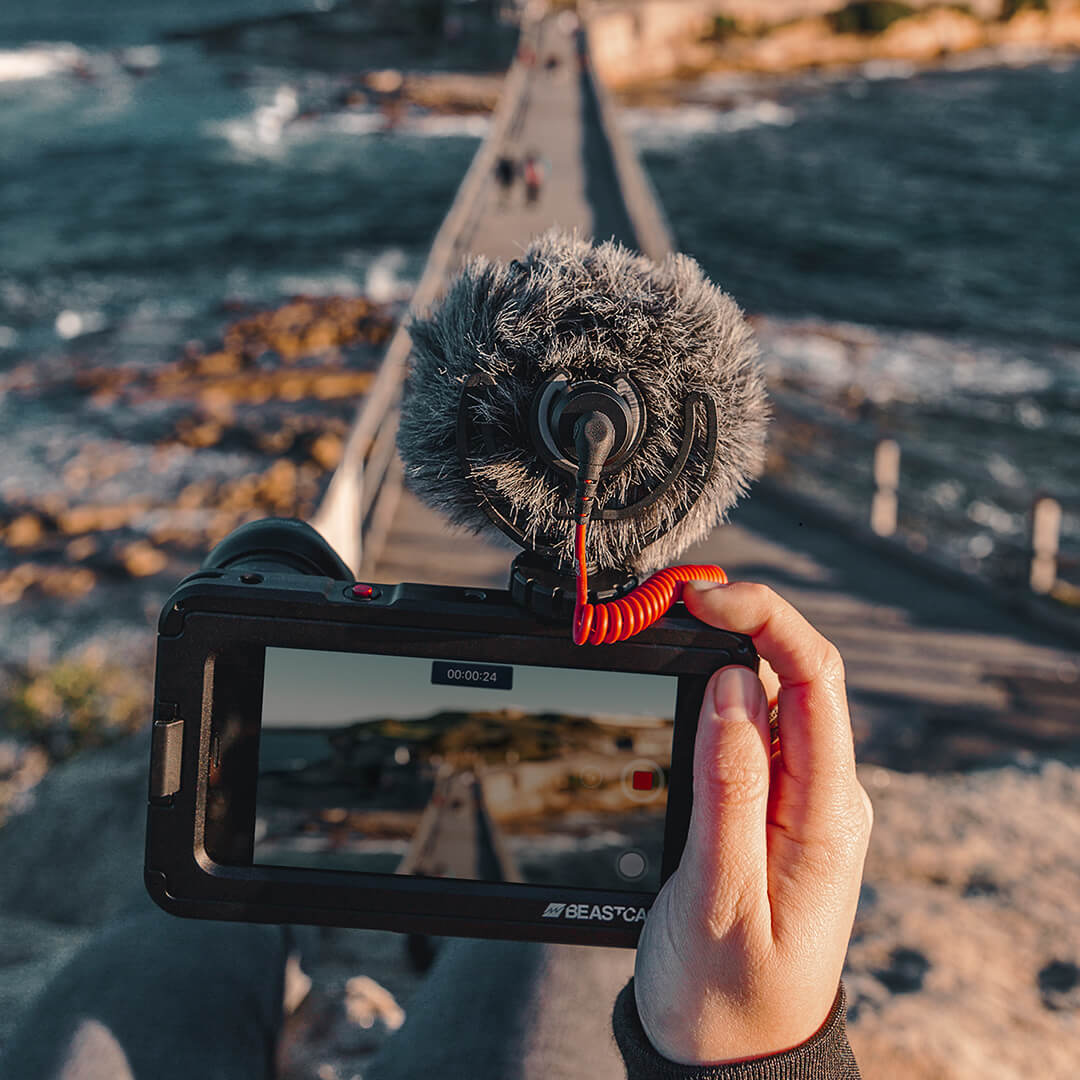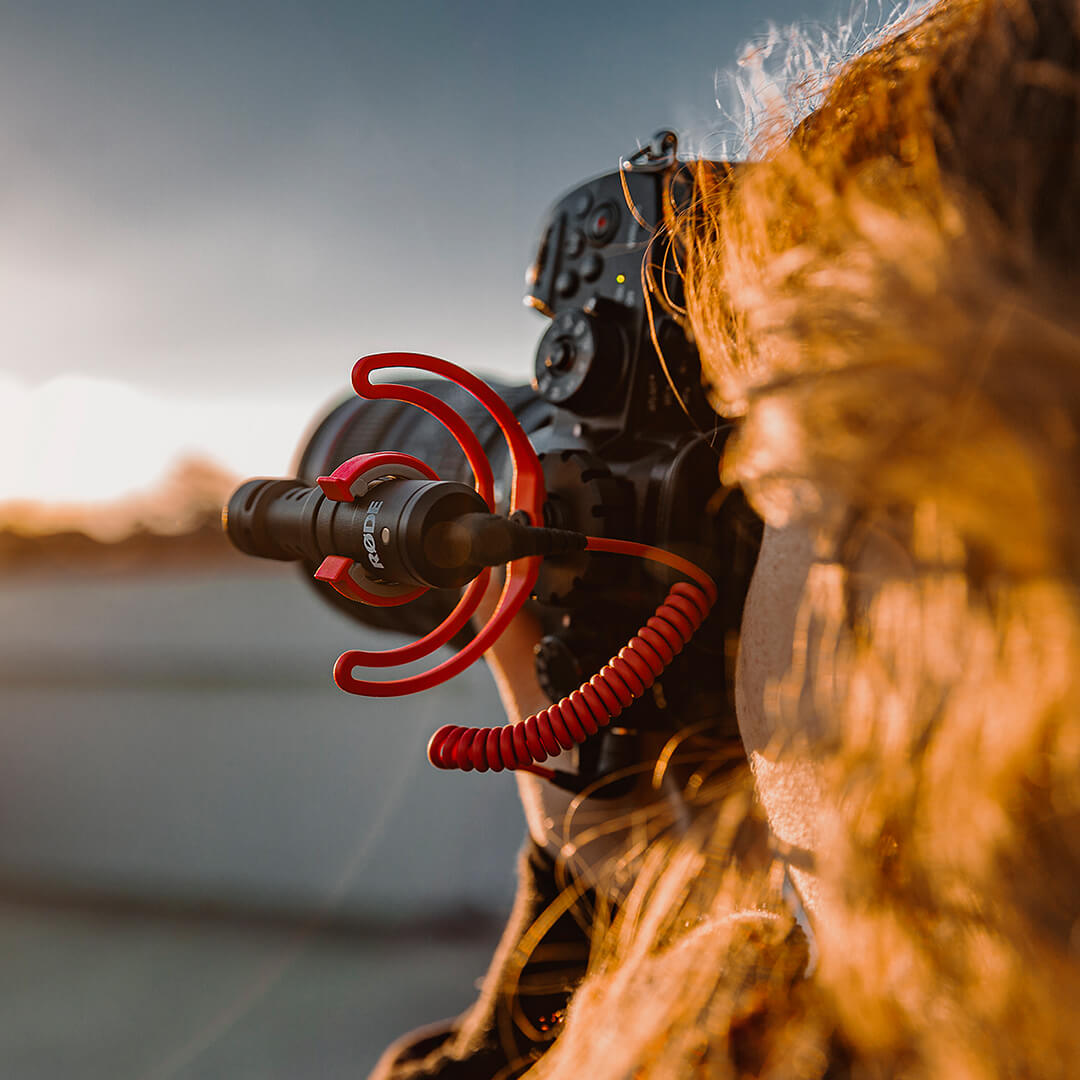VideoMicro
Microfono Compatto per Fotocamera
Il VideoMicro è un microfono di alta qualità per fotocamere, ideale per vlogging e filmmaking. Ultra-compatto e leggero, è il microfono perfetto per catturare un audio incredibile che accompagni una visione ispiratrice.
Caratteristiche principali:
- Microfono a condensatore di alta qualità per fotocamere
- Compatto e leggero (solo 42g)
- Ideale per l'uso con fotocamere compatte, action camera e DSLR
- Montaggio antiurto integrato Rycote® Lyre® per un isolamento superiore dal rumore di manipolazione
- Parabrezza deluxe per registrazioni all'aperto
- Super facile da usare, non richiede batterie
- Microfono a condensatore di alta qualità per fotocamera
- Compatto e leggero (solo 42g)
- Ideale per l'uso con fotocamere compatte, action camera e DSLR
- Montaggio antiurto integrato Rycote® Lyre® per un'isolamento superiore dal rumore di manipolazione
- Paravento deluxe in pelliccia per registrazioni all'aperto
- Facilissimo da usare, non richiede batteria
Aggiorna il tuo audio
Utilizzare un microfono esterno di alta qualità è il modo più semplice per migliorare significativamente l'audio della tua fotocamera. Con la sua capsula a condensatore di alta qualità e il pattern polare cardioide, il VideoMicro offre un audio nitido, chiaro e naturale, ideale per il vlogging e il filmmaking dinamico.

Versatilità Compatta
Il VideoMicro è ultra compatto e pesa solo 42g, rendendolo perfetto per l'uso con fotocamere più piccole, nonché con smartphone e altri dispositivi mobili (è richiesto un cavo SC7 aggiuntivo). Eccelle anche quando utilizzato su un'asta microfonica e, grazie al suo rivestimento ceramico di alta qualità e al parabrezza peloso deluxe, è ideale per l'uso all'aperto in una varietà di scenari cinematografici, rendendo il VideoMicro un microfono compatto estremamente versatile.

Specifiche tecniche
FAQ
The VideoMicro is extremely user-friendly as there's no switches or battery to worry about - just plug in and go. All microphones need power however, and in the case of the VideoMicro it is drawing a very small voltage commonly referred to as "plug-in power" from your camera (or recording device) via the audio cable.
Plug-in power has long been a standard for camera manufacturers, and so the VideoMicro is compatible with the vast majority of cameras in the market.
The following cameras unfortunately do not support the VideoMicro:
- Nikon D7000
- Canon T3/1100D
- Canon C100, C300, C500
- Canon VIXIA HFR500
- Canon VIXIA HFG20, HFG30
- Canon XA-10
- Canon Vixia G10
- Canon Legria HF G25
If you are experiencing issues getting your VideoMicro to operate with a camera not listed above, firstly be sure to update your camera's firmware to the latest version (available from your camera manufacturer's website). If you are still experiencing issues please get in touch with us via our support page.
The RØDE cold shoe adaptor is a standard size adaptor, also known as a universal shoe mount. This standard shoe is suitable for the majority of camera attachments.
If your camera has a different, or custom adaptor, please contact your camera manufacturer for information on converters to fit the universal shoe connection.
Yes, all of our microphones in the VideoMic range have a standard 3/8 thread built into the bottom of the cold shoe mount for connection to a boompole, mic stand or tripod.
This is usually caused by the function of "Automatic Gain Control" or "AGC" on the camera.
Basically, when the camera cannot sense an audio input signal, it automatically increases the gain of the input. It is increased so much that the noise floor in the camera microphone amplifier becomes audible.
The AGC can be disabled on some cameras and it is worth checking with you camera manufacturer for information on this, which can sometimes require a firmware update to the camera.
RØDE have created the VideoMic Pro to help combat this issue, the VideoMic Pro contains a 20dB pre amplifier, boosting the mic signal so that the camera will see a good signal level and not engage its AGC.
We recommend setting your audio levels manually to achieve an optimum signal to noise ratio and disabling the AGC of the camera.




